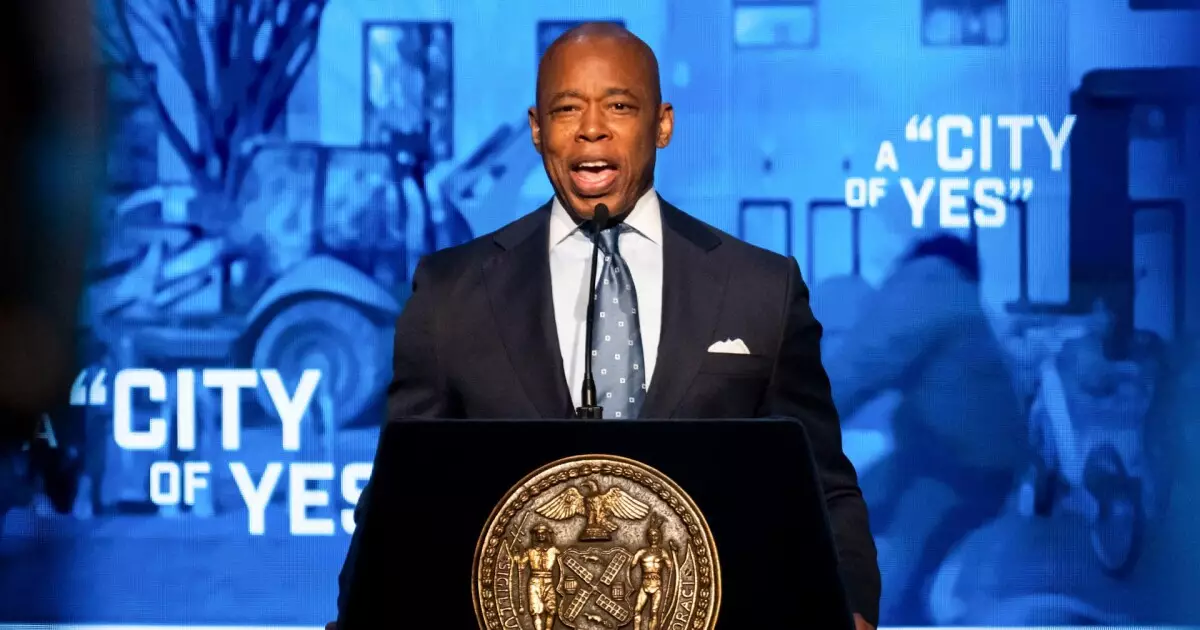In the intricate landscape of urban governance, financial strategizing plays a pivotal role in ensuring the sustainability of city functions and services. New York Mayor Eric Adams has recently unveiled a budget proposal for the fiscal year starting on July 1, amounting to a staggering $114.5 billion. This budget, significantly larger than its predecessor by over $2.5 billion, marks a notable shift from the previous administration’s conservative budgeting practices, opening the gateway to discussions about fiscal health, future projections, and socio-economic implications affecting the city.
Historically, municipal budgets often reflect stringent austerity measures, aimed at realigning expenditures with reduced revenues. However, Adams’ latest budget proposal breaks that trend, revealing optimism in financial recovery and management. This approach has been positioned as a direct consequence of efficient fiscal controls and a more robust economic landscape. Unlike past efforts that emphasized cuts and savings, this budget introduces considerable spending on social services, indicating a newfound confidence within the city’s economic projections. Nevertheless, critics have pointed out that this optimistic outlook could simply be a misleading facade— a culmination of previously overly conservative budgeting that has left many essential services underfunded.
A noteworthy aspect of the budget is its reliance on a projected surplus in revenues, bolstered by a moderate recovery in business activity alongside strong tax receipts. City officials announced an anticipated $3.1 billion increase in tax revenue, calculated on the back of revitalized commercial activity and an optimistic forecast for tourism, expected to return to pre-pandemic levels by 2025. Yet, one must question the sustainability of such growth, especially amidst looming budget deficits estimated at $4.2 billion in fiscal 2027 and further over subsequent years. The ambitious spending plan thus raises pertinent inquiries regarding its long-term viability.
A focal point of the budgeting narrative revolves around the city’s response to the ongoing migrant crisis. Since April 2022, New York City has confronted the arrival of over 230,000 migrants, leading to increased sheltering costs and social services. However, Adams projects a significant budgetary reprieve stemming from lower-than-expected expenses related to this issue. A total expenditure of $6.91 billion for sheltering and services has been reported, which starkly contrasts with the initial $12 billion forecast.
This reduction can be attributed to strategic interventions such as imposing limits on shelter stays and renegotiations with service providers, indirectly suggesting that earlier projections might have been inflated. While these measures have led to a decrease in migrant shelter occupancy—from over 69,000 to fewer than 50,000—critics argue that the city should have provided a more aggressive and proactive solution instead of relying on reactive measures.
The relationship between the City of New York and the federal government is inherently complex and fraught with uncertainties, especially as the political landscape shifts. Deputy Mayor Fabien Levy has expressed proactive strategies aimed at maintaining robust federal funding, estimated at approximately $7.9 billion annually. As the Trump administration looms on the horizon again, city officials emphasize a more diplomatic engagement, diverging from prior confrontational stances taken by former Mayor Bill de Blasio or former Governor Andrew Cuomo.
The uncertainty regarding federal support hangs over New York’s budget like a cloud, with many individuals questioning the potential repercussions should the political winds shift unfavorably. The city’s dependency on federal aid for vital programs poses inherent risks, requiring vigilance and adaptability in financial planning.
In a bid to address economic inequality, Mayor Adams has proposed the “Axe the Tax” initiative aimed at alleviating the tax burden on low-income families. If approved, this plan would phase out city income taxes for families earning at or below 150% of the federal poverty line, costing an estimated $63 million initially. This endeavor, while noble in its intent to support economically vulnerable populations, may also strain an already precarious financial fabric.
As New York City navigates the complexities of fiscal management under Mayor Eric Adams, the new budget reflects a cautious but optimistic outlook that meets with both praise and skepticism. The deviation from previous austerity measures raises essential questions about planning, sustainability, and resilience as the city approaches its fiscal future. With challenges such as potential federal funding cuts and the need for increased social services, the efficacy of this financial strategy will ultimately depend on maintaining a careful balance between expenditure, economic growth, and accountability.

